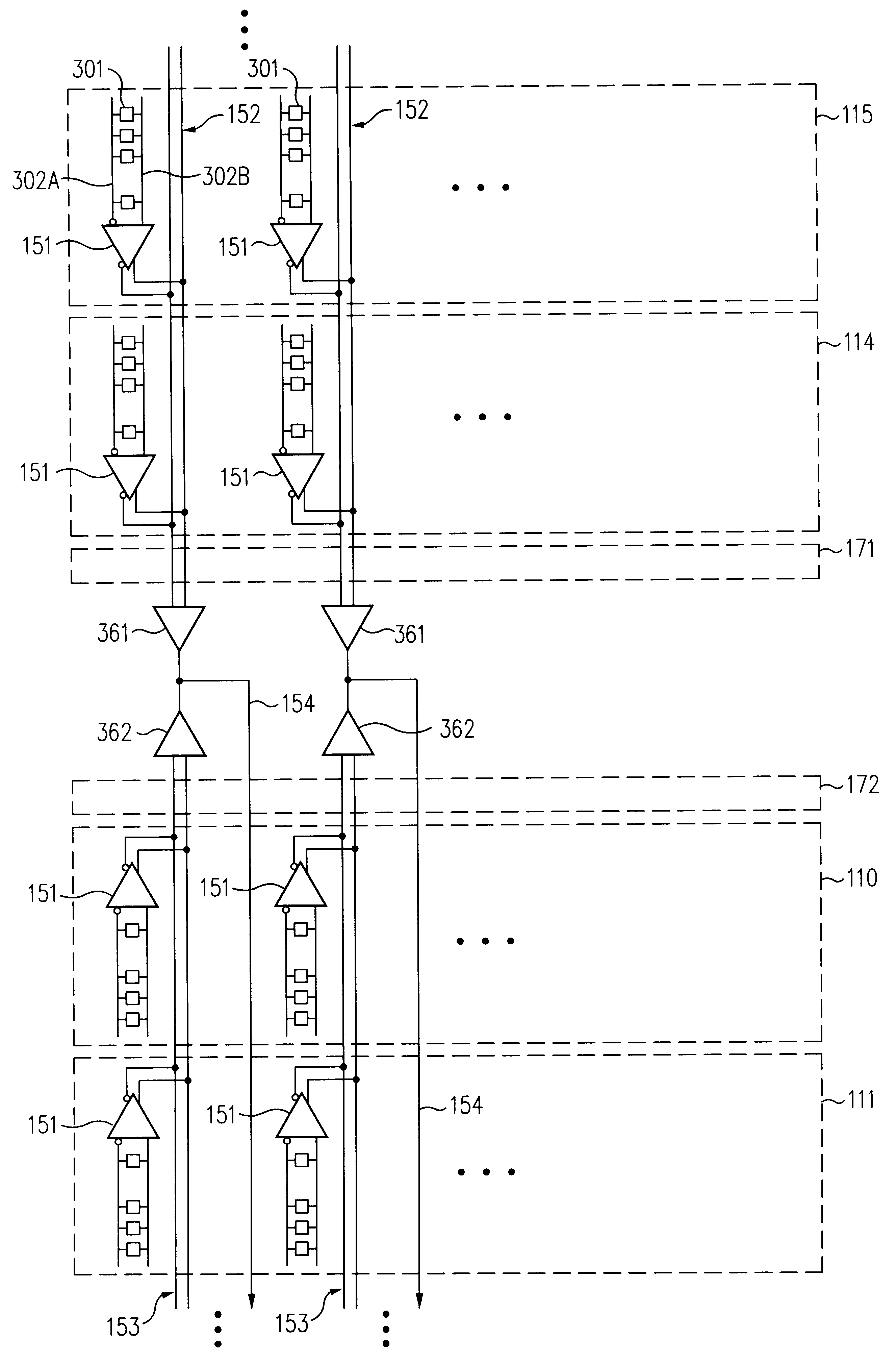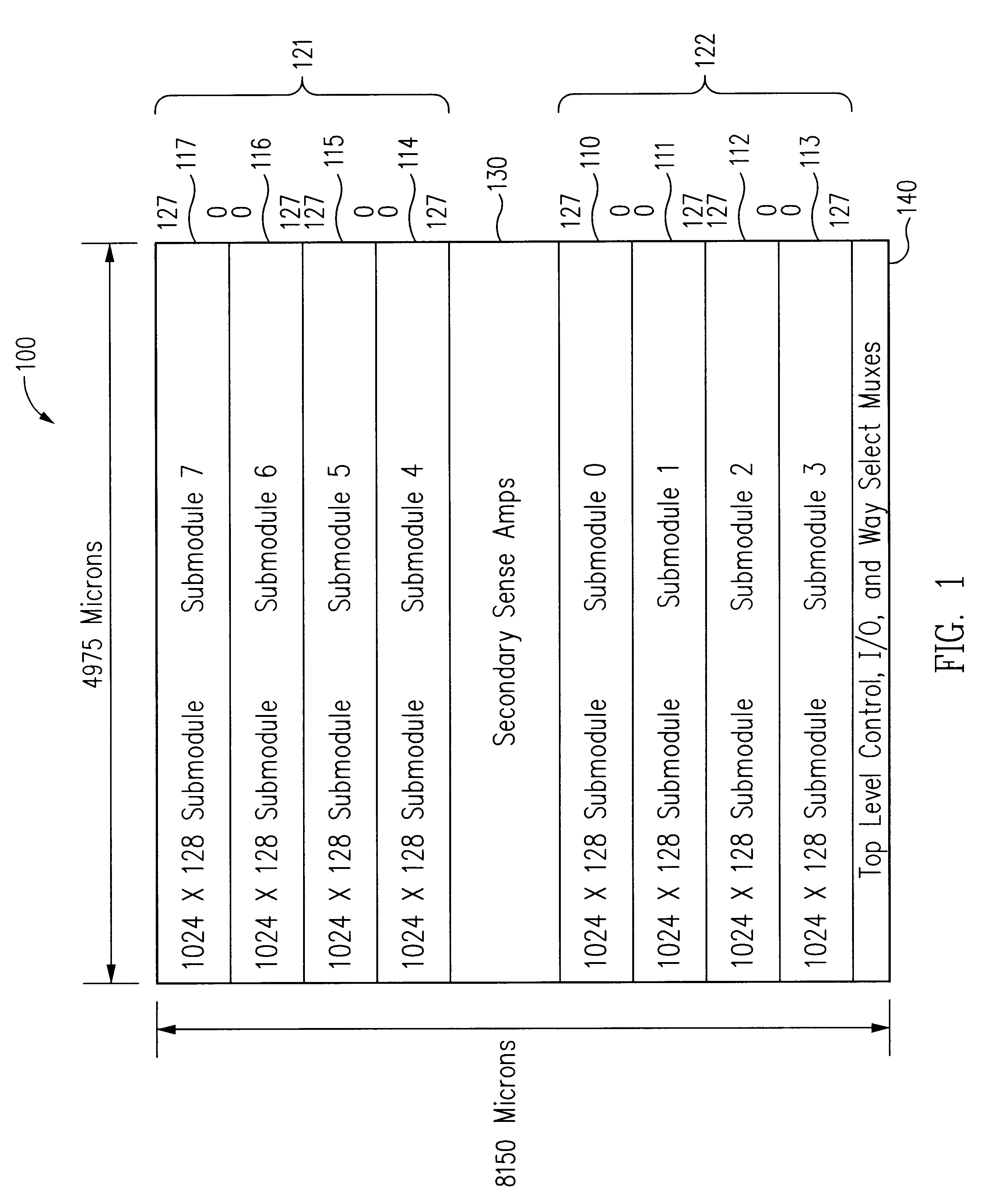Layout for semiconductor memory including multi-level sensing
a semiconductor memory and multi-level sensing technology, applied in the field of semiconductor memory, can solve the problems of consuming significant power achieving lower power, and reducing the power consumption of conventional sense amplifier circuits
- Summary
- Abstract
- Description
- Claims
- Application Information
AI Technical Summary
Benefits of technology
Problems solved by technology
Method used
Image
Examples
Embodiment Construction
FIG. 1 depicts the organization and layout of a memory module 100 in accordance with an exemplary embodiment of the present invention. Eight submodules or banks 110, 111, 112, 113, 114, 115, 116 and 117 are organized into upper and lower groups 121 and 122. In the embodiment of FIG. 1, the submodules are substantially identical and each includes an array of memory cells, word line drivers and word line decoders, column decoders, primary sense amplifiers, write drivers, equilibrate circuits, and control circuitry (not shown). In this regard, the submodules are conventional and, based on the description herein, a variety of suitable configurations will be appreciated by persons of ordinary skill in the art. However, in accordance with some embodiments of the present invention, advantageous primary sense amplifier configurations are described in greater detail below with reference to FIG. 4. Secondary sense amplifiers 130 (FIG. 1) are positioned toward the center of memory module 100 b...
PUM
 Login to View More
Login to View More Abstract
Description
Claims
Application Information
 Login to View More
Login to View More - R&D
- Intellectual Property
- Life Sciences
- Materials
- Tech Scout
- Unparalleled Data Quality
- Higher Quality Content
- 60% Fewer Hallucinations
Browse by: Latest US Patents, China's latest patents, Technical Efficacy Thesaurus, Application Domain, Technology Topic, Popular Technical Reports.
© 2025 PatSnap. All rights reserved.Legal|Privacy policy|Modern Slavery Act Transparency Statement|Sitemap|About US| Contact US: help@patsnap.com



